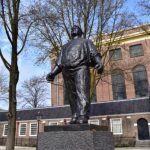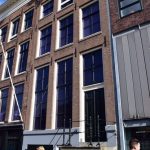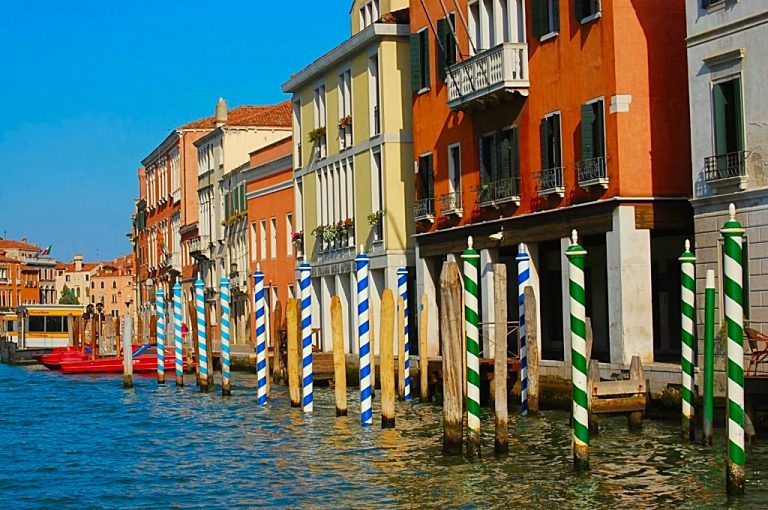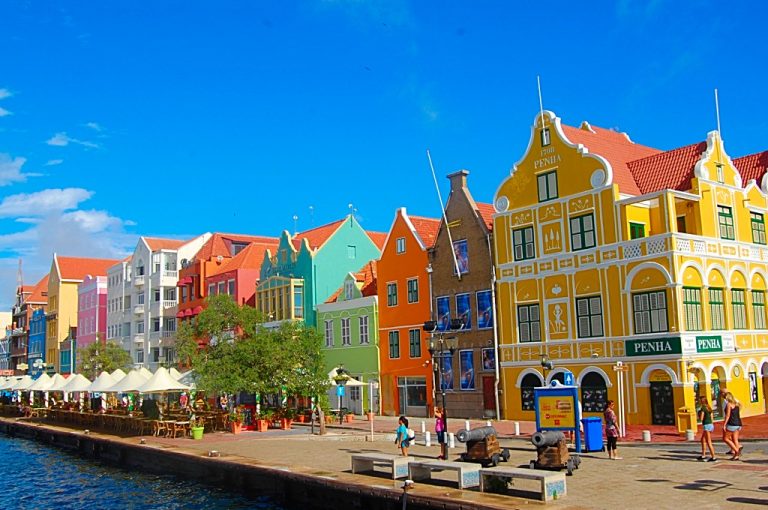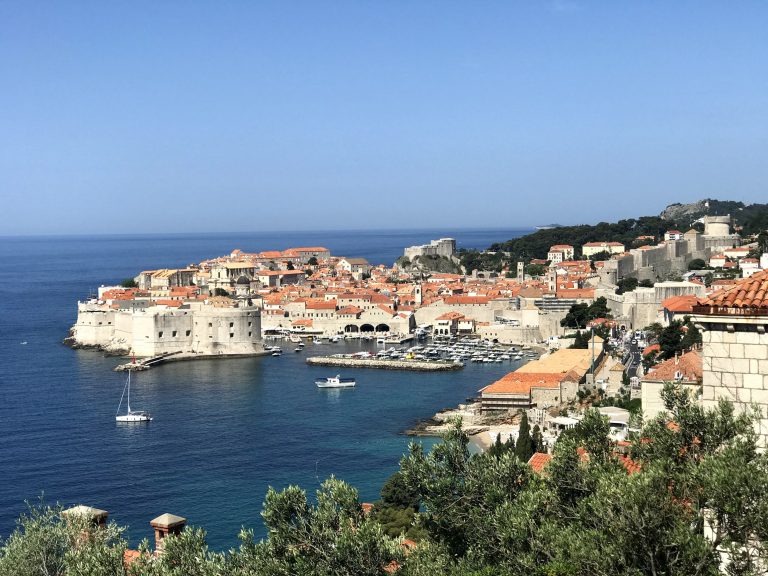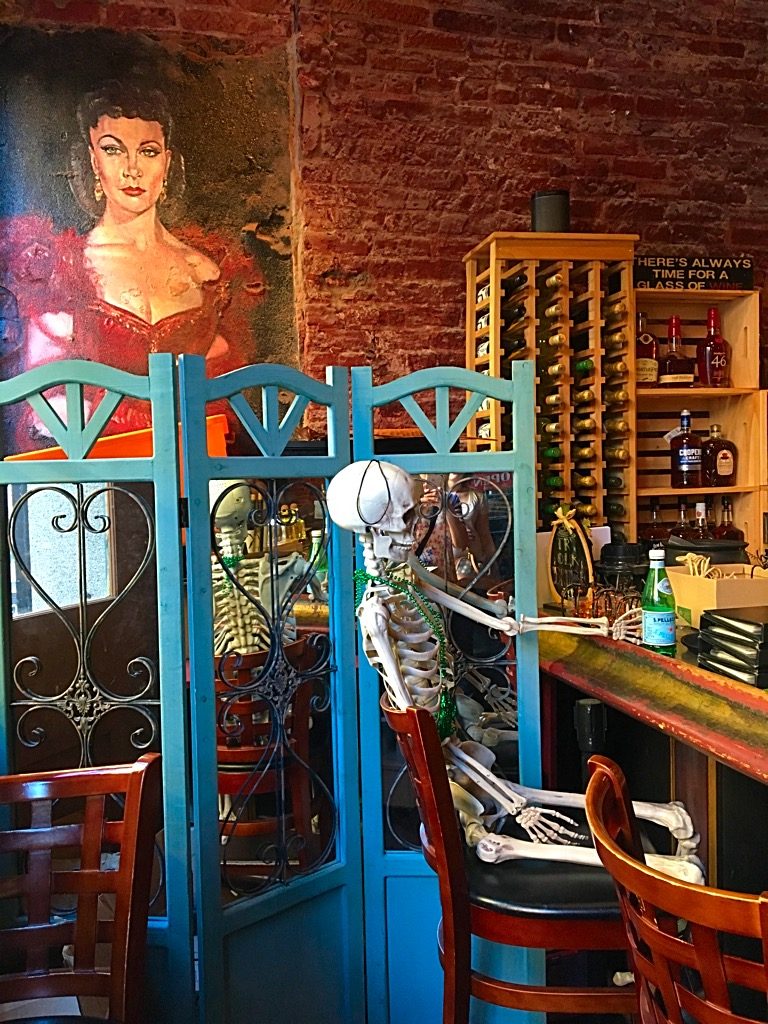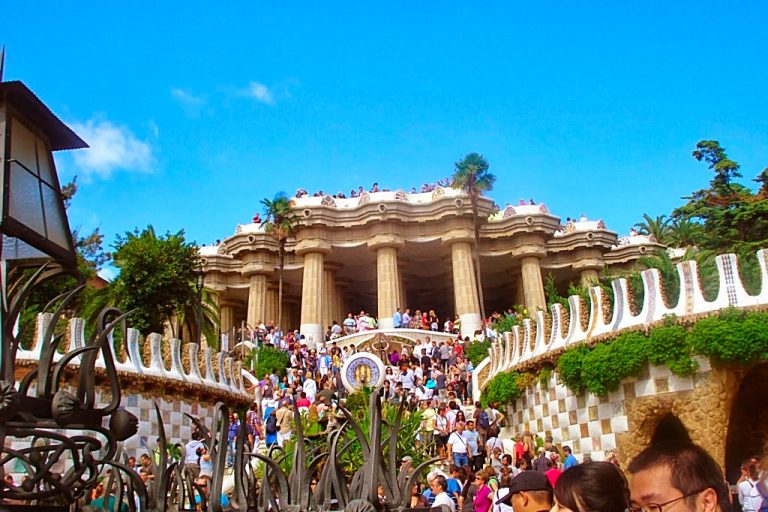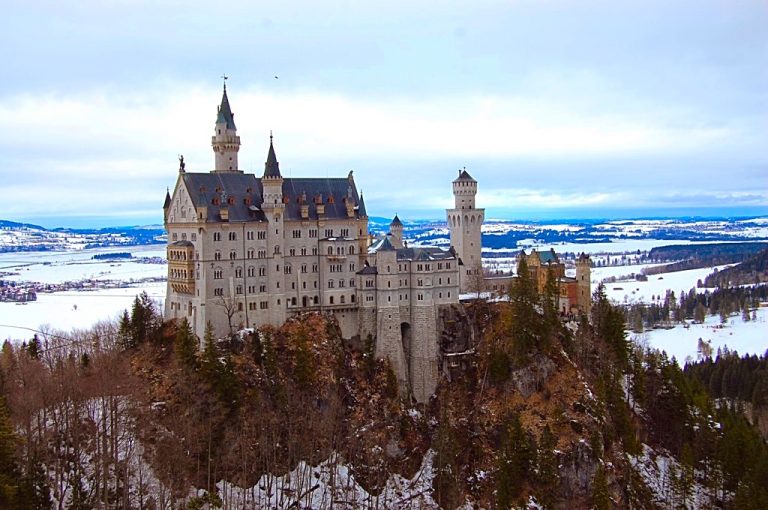Amsterdam and Its Surroundings
Jewish History
In case you didn’t know, Amsterdam is where Anne Frank wrote her diary as she hid from the German Nazis during WW2.
Amsterdam has a rich Jewish history. In the 17th century, the Jewish people thrived here. It was the place to be as a big trade area of the world at that time. With the Spanish Inquisition going on, so many Portuguese and Spanish Jews fled to Amsterdam. Once World War 2 came around, “Amsterdamers” – (our local guide used this term – so I am too), turned a blind eye as Hitler told them that they won’t be part of the war and that it/they will be fine. Hitler then wanted to secure the French-German, which involved occupying Amsterdam. He was permitted to do this as once again, he still claimed that Amsterdam would remain peaceful. At first it was, the economy became even better. They then agreed to hand over their Administration to the Nazis. In handing this over, they handed over one especially vital key – the maps of where everyone was living in the town, and each person’s ethnicity. Game over. Amsterdamers were essentially living the “frog in the boiling pot” analogy. They knew something was wrong but didn’t act as things got worse and worse, they even drove their own people on trams to the Centrale Station. In fact, one tram in particular (tram #9) went from the Jewish Quarter to the Centrale Station. From there, some of those passengers were then loaded on other trains that ended up at various concentration camps. There are still small pieces of tracks left as a history symbol in the Jewish Quarter, right outside of the Jewish History Museum. After the War, Amsterdam removed the #9 from their entire public transit system. You will not find a bus/tram/train #9 there today.
After their own “Inglorious Bastards” moment when an ice cream shop owner put up ammonia sprayers to spray the Nazis inside the shop, a huge fight occurred and Amsterdam finally woke up. Our guide told us that Amsterdam was the only city to put up a strike against the Nazis.
Amsterdam women that were in charge of delivering food to a day care saved thousands of Jewish babies lives by taking them to the day care when they brought the food (no one would notice extra noise inside an already loud daycare environment). The end game to this was the women got the babies adopted out, thus saving their lives from the Nazis getting to them.
Today, there is a statue of a harbor worker representing the strike on the Nazis in the Jewish Quarter.
Anne Frank’s house can be toured here, but book tickets months in advance or they will sell out. It is a 2-3 hour wait in line even in the off season if you do not have a “skip the line” ticket. Anne Frank’s house is also close to the Jordaan neighborhood, notorious for artsy shops and eats..especially for a piece of the Dutch apple pie.

Inside of the Portuguese Synagogue in the Jewish area, on the first Thursday of every month during winter, they light 1000 candles inside (there is no electric). I heard that this is awesome to experience – there’s one reason to visit Amsterdam in the winter!
Bikes

I have never, ever, seen so many people riding bikes anywhere (perhaps even combined) than Amsterdam. Everyone here rides a bike. There are bike lanes along side of the roadways and pedestrian walkway areas. The bike lines have their own stop light symbols. Anyone who visits here will quickly find out how dangerous the bikes (not the cars) are.
Canals and Tilting Houses

Amsterdam is full of canals. Our local guide named Eef on our Jewish walking tour told us that there are 88 canals. She pointed out the houses that seem to be “drunk” or leaning, or “dancing” is really what they refer to them as. The dancing house effect can happen for a number of reasons – one being that there was an old foundation that was not supportive enough so the house shifted in the swampiness below it. Eef told us that since the canals are UNESCO world heritage protected, the government will make sure they are safe and secure even if they are dancing.

A great way to view the iconic housing style of Amsterdam and see the dancing houses, is by doing a canal cruise. You’ll also notice that Dutch people have enormous windows on their house with essentially no window coverings. This is said to date back to Calvinism. They are used to people seeing everything they are doing, knowing what time they sit down for dinner or who is over visiting.
Red Light District
To make the most of this neighborhood and learn about both the famous red light windows, the fact there are over 20 cafés and coffeeshops, markets in the square, a kindergarten, China Town, and plenty of other flare, I suggest letting an entertaining local lead the way and (if above 18, a visit to the Museum of Prostitution). Read more from my blog on the Red Light District here.
Windmills
[wpvideo tEdVu8gM]
The unique area in the country that includes the windmills, wooden buildings, little museums and quaint shops, is called Zaanse Schans. The windmills’ old wooden blades turn ever so slowly and peacefully, but what goes on inside is a bit more complex. The windmill that we went inside, named De Zoeker, displayed to us how to grind and press peanut oil. I may or may not have gotten distracted by the calico cat flaunting around for some attention and wish we had more time to go in more of the stores!
Tulips

Holland (the western province of the Netherlands) is notorious for windmills AND tulips. The windmills can be seen all year round, but the tulips – only ~2 months out of the year. A very long time ago, a Dutch explorer brought back a tulip from Asia. They have been all the rave ever since. One fantastic place to explore and see the flowers is the Keukenhof gardens. This garden exhibit area is nearly 80 acres of property filled with spring flowers. All of them. In crazy intricate designs – tulips and crocus filling in the design of a tulip itself. Each year is a different “theme” to the designs. There is plenty of areas to peruse at your leisure, explore shops, greenhouses, cafés, see flower demonstrations, and even vote for your favorite tulip. I wish I could bottle up the smell inside the greenhouses in particular and bring it home with me. There are tour buses that run all day during these couple of months (late March – late May) back and forth from near the central station in Amsterdam. The buses pass the farming country where there are fields of tulips that look like seas of yellow, red, white, purple.. It’s beautiful. The fields are rotated each year, meaning that one year a farmer might grow daffodils, but then the next year they’ll do tulips, then crocus, and so on. After the bulbs are ready to pick for export, they feed the flowers to the cows.
Fishing Villages and Wooden Shoes
You can easily visit the quiet old fishing village of Marken and Volendam in a half day trip. In Marken, see how entertaining making the traditional dutch wooden shoes can be and try some real ones on for size. Marken keeps old traditions alive, has a scenic harbor with the old style traditional Dutch wooden houses, and (to me) looks like the perfect place to spend a weekend for some R&R from the city.

We took a one way boat ride from Marken to Volendam. In Volendam, you can visit the Cheese Factory (sample a million different kinds of Dutch cheese), walk the boardwalk of the marina scoping out some awesome wooden yachts, try a plate of the local kipperling fish (a very mild, delicious fish similar to cod), and get some dessert at Woltje’s Backerij. Famous desserts in Holland are Stroopwafels – two thin waffles cooked with a layer of caramel or chocolate in between. They are delicious fresh and warm, but can be purchased in adorable little white and blue dutch print tins to bring home for later (and still very delicious). The Netherlands also loves their black licorice. I do too. There is so many kinds of black licorice – hard, soft, sugar covered, sweet, salty, double salty, honey, etc. I have never before heard of the salt kind, so I purchased some at Woltje’s. I didn’t like it at all, but hey it sparked my curiosity. These licorices come in all shapes and sizes. One type of salty flavor in particular comes in shape of the herring fish (also known in this area). Kind of fitting for the salty analogy because in Holland they eat the herring fish raw.


On the way back to Amsterdam, our guide sang for us a song in Dutch, which he even stated himself is the complete opposite of a romantic language. Almost every word sounds like you are a growling tiger. We swayed to the tune of his song, didn’t understand a word of it, and yet somehow all clapped at the end with our eyes glued to beautiful sunset.
The Netherlands may translate to “The Low Lands,” but the people are quite opposite -cheerful, friendly, some actually quite high (har har – bad joke).
Looking to go to Holland?—I can book this (or any trip) for you – the entire trip from airfare, hotel, to excursions such as these.

